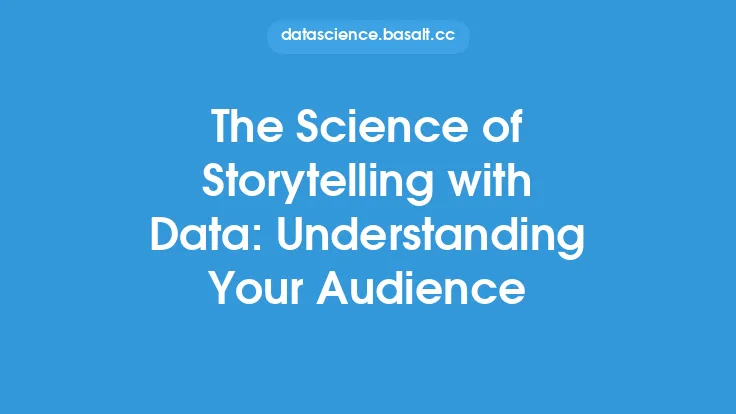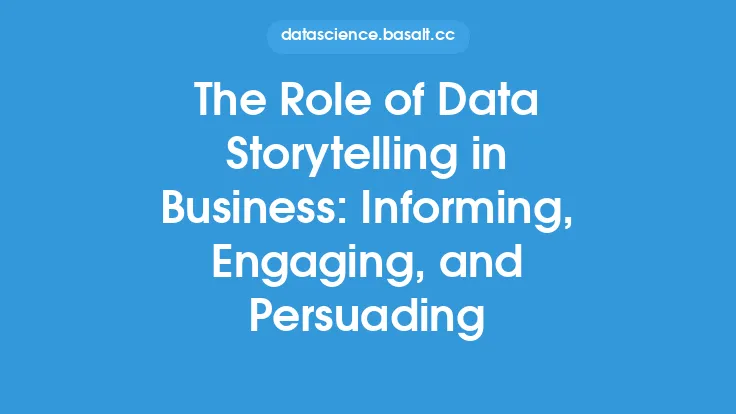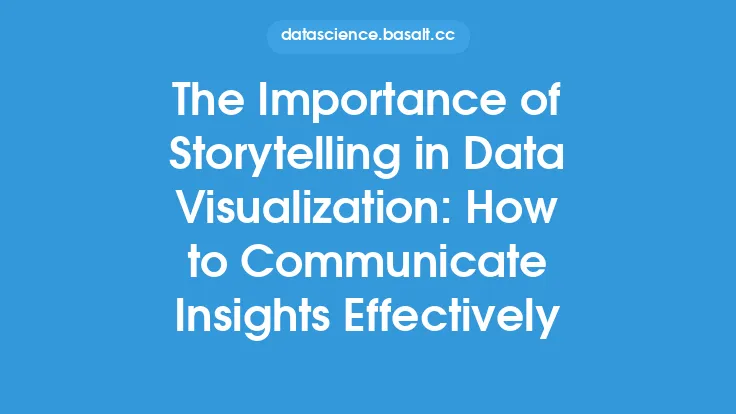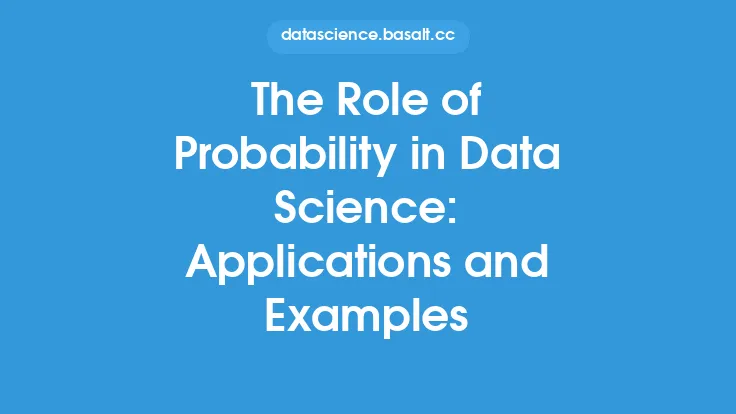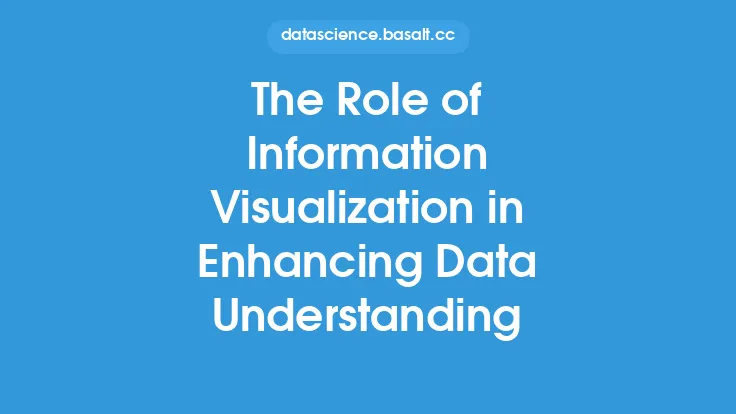Data science is a field that has revolutionized the way we approach problem-solving and decision-making. With the ability to collect, analyze, and interpret large amounts of data, data scientists can uncover insights that were previously unknown or inaccessible. However, the true value of data science lies not just in the analysis itself, but in the ability to communicate the findings effectively to stakeholders. This is where storytelling comes in – a crucial aspect of data science that can make or break the impact of the insights.
Introduction to Storytelling in Data Science
Storytelling is an essential component of data science because it allows data scientists to convey complex technical information in a way that is easy for non-technical stakeholders to understand. By using narrative techniques, data scientists can create a compelling story that highlights the key findings, insights, and recommendations that emerge from the data analysis. This story can be used to inform business decisions, drive policy changes, or simply to educate and raise awareness about important issues. Effective storytelling in data science requires a combination of technical skills, such as data analysis and visualization, and soft skills, such as communication and presentation.
The Benefits of Storytelling in Data Science
There are several benefits to using storytelling in data science. Firstly, it helps to make complex technical information more accessible and engaging for non-technical stakeholders. By using a narrative approach, data scientists can break down complex concepts into simple, easy-to-understand language that resonates with their audience. Secondly, storytelling helps to create an emotional connection with the audience, which can be a powerful motivator for action. When stakeholders are emotionally invested in the story, they are more likely to remember the key findings and take action on the recommendations. Finally, storytelling helps to provide context and perspective, which is essential for making informed decisions. By setting the story in a broader context, data scientists can help stakeholders understand the implications and potential consequences of their decisions.
Key Elements of Effective Storytelling in Data Science
So, what makes a good story in data science? There are several key elements that are essential for effective storytelling. Firstly, a clear and concise narrative is essential. This means avoiding technical jargon and focusing on the key findings and insights that emerge from the data analysis. Secondly, visualization is a critical component of storytelling in data science. By using charts, graphs, and other visualizations, data scientists can help to illustrate complex concepts and make the story more engaging and interactive. Thirdly, context is essential for providing perspective and helping stakeholders understand the implications of the findings. This can include information about the data collection process, the methodology used, and any limitations or biases in the data. Finally, a clear call to action is essential for motivating stakeholders to take action on the recommendations.
Technical Skills for Storytelling in Data Science
While storytelling is often associated with soft skills, such as communication and presentation, there are also several technical skills that are essential for effective storytelling in data science. Firstly, data scientists need to have strong data analysis skills, including the ability to collect, clean, and analyze large datasets. Secondly, they need to have expertise in data visualization tools, such as Tableau, Power BI, or D3.js. Thirdly, they need to have a good understanding of statistical modeling and machine learning techniques, which can be used to identify patterns and trends in the data. Finally, they need to have programming skills, such as Python or R, which can be used to automate tasks and create interactive visualizations.
Best Practices for Storytelling in Data Science
So, how can data scientists tell effective stories with data? There are several best practices that can help. Firstly, know your audience and tailor the story accordingly. This means avoiding technical jargon and focusing on the key findings and insights that are most relevant to the stakeholders. Secondly, keep it simple and concise. Avoid using complex technical language or overwhelming the audience with too much information. Thirdly, use visualization to illustrate complex concepts and make the story more engaging and interactive. Finally, practice, practice, practice! Storytelling is a skill that takes time and practice to develop, so don't be discouraged if it doesn't come naturally at first.
Common Challenges in Storytelling with Data
While storytelling is a powerful tool for communicating insights and driving action, there are also several common challenges that data scientists may face. Firstly, communicating complex technical information in a way that is easy for non-technical stakeholders to understand can be difficult. Secondly, avoiding bias and ensuring that the story is objective and balanced can be a challenge. Thirdly, dealing with missing or incomplete data can be a problem, as it can limit the accuracy and reliability of the findings. Finally, communicating uncertainty and ambiguity can be difficult, as it can be hard to convey the nuances and complexities of the data in a way that is easy for stakeholders to understand.
Future Directions for Storytelling in Data Science
As data science continues to evolve and mature, the role of storytelling is likely to become even more important. With the increasing use of artificial intelligence and machine learning, data scientists will need to be able to communicate complex technical information in a way that is easy for non-technical stakeholders to understand. Additionally, the use of emerging technologies, such as virtual and augmented reality, is likely to create new opportunities for storytelling and visualization. Finally, the increasing focus on ethics and responsible AI is likely to require data scientists to be more transparent and accountable in their storytelling, and to prioritize fairness, accuracy, and transparency in their communication of insights and findings.
